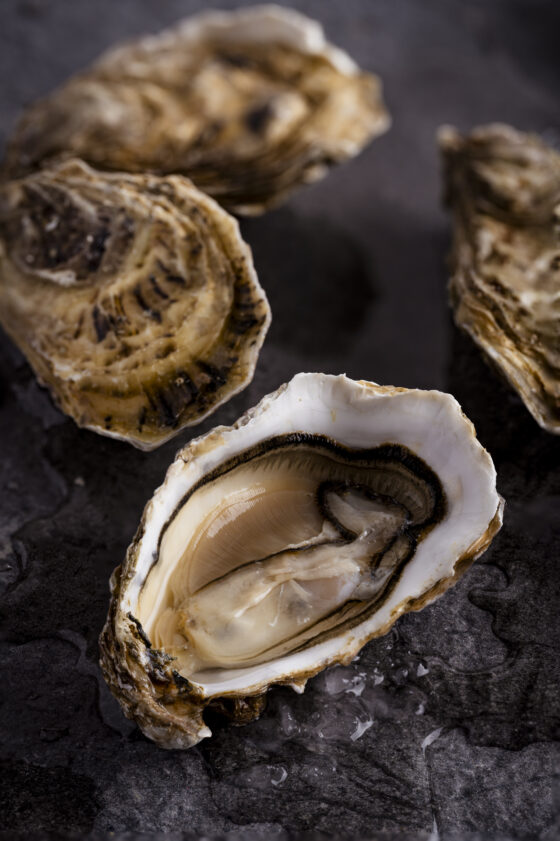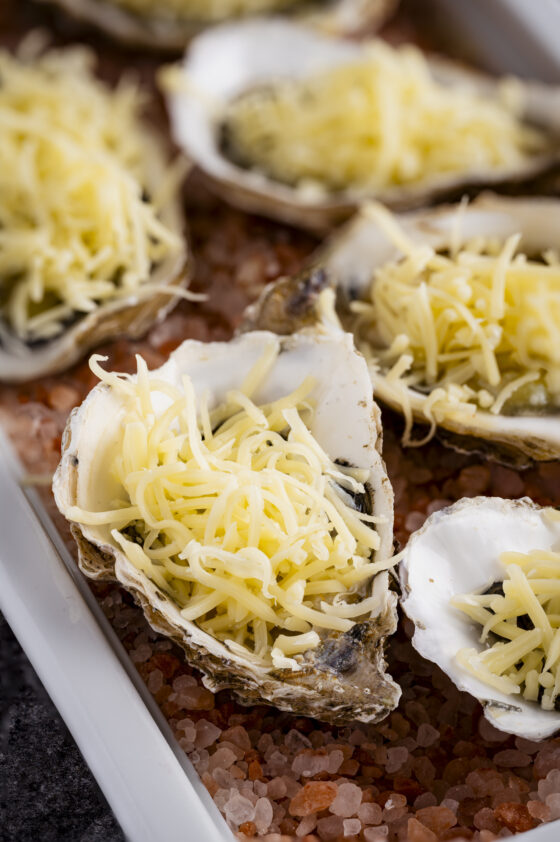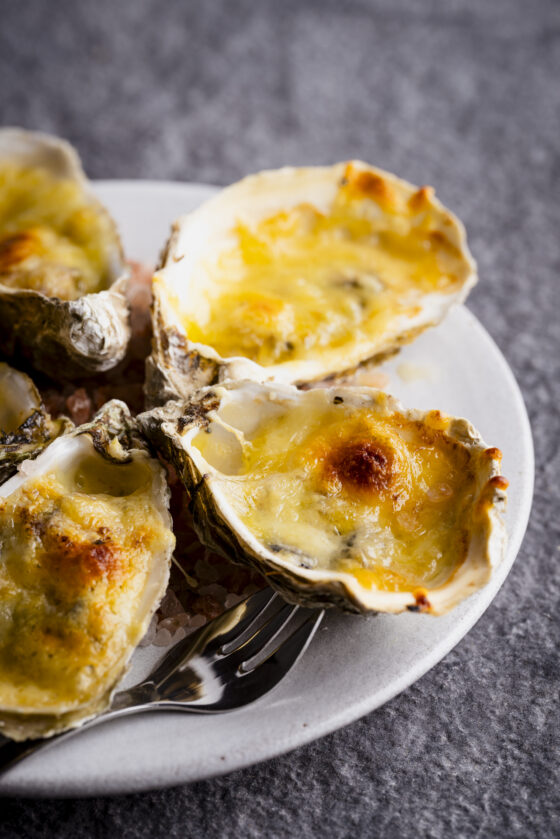Namibian style oysters au gratin
You would probably never think of it, but did you know that Namibia is a major world producer of oysters? On a catamaran cruise we tasted Namibian oysters straight from the oyster beds in Walvis Bay. Skipper Billy also gave me his favorite recipe for oysters au gratin.
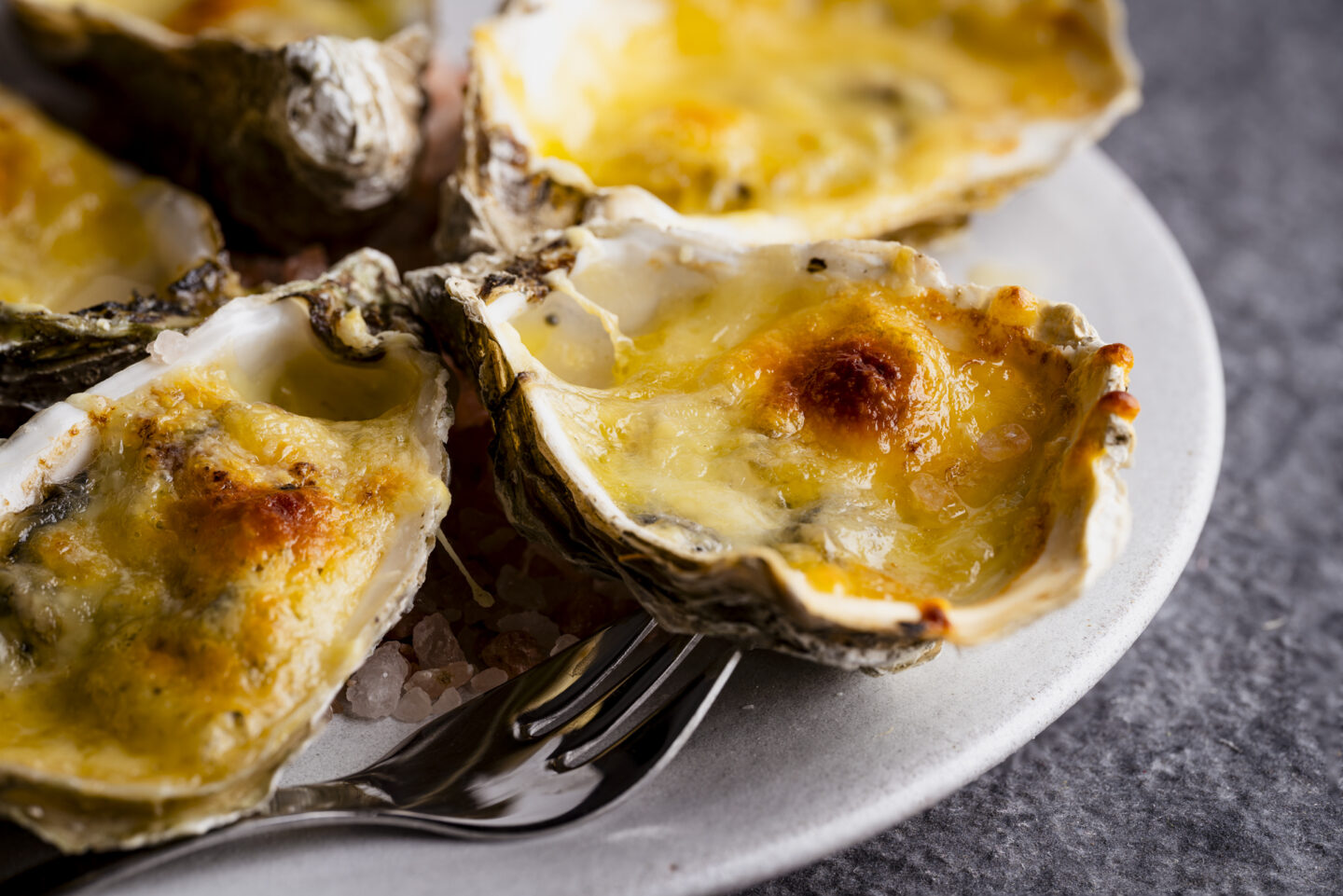
Walvis Bay and the Benguela River
The cold Benguela Current runs north along the west coast of southern Africa and is one of the richest sources of phytoplankton and oxygen on Earth. The current passes through Walvis Bay in Namibia, which has one of the highest concentrations of nutrients along the coast of Africa. The local oyster beds take full advantage of the nutrients and grow faster in this unique habitat than anywhere else in the world. A Namibian oyster matures in one year, while elsewhere it can take two to three years.
The Chilean link
Oysters are not native to the Namibian coast. The first oyster farm was started with oyster larvae from Chile. Now the larvae are spawned locally, and the oysters are 100% Namibian. Oyster farms stretch from Swakopmund to Luderitz in the south, but the oysters are always moved to Walvis Bay for optimal growth.
Characteristics of the Namibian oyster
Namibian oysters are large hollow oysters called creuses. They range in size from 30 to 150 grams and are available all year round. The oysters are very fleshy. This makes the larger specimens particularly suitable for hot preparations. The area in which the oyster grows largely determines its taste. Namibian oysters have a nice balance between sweet and salty and are very tasty.
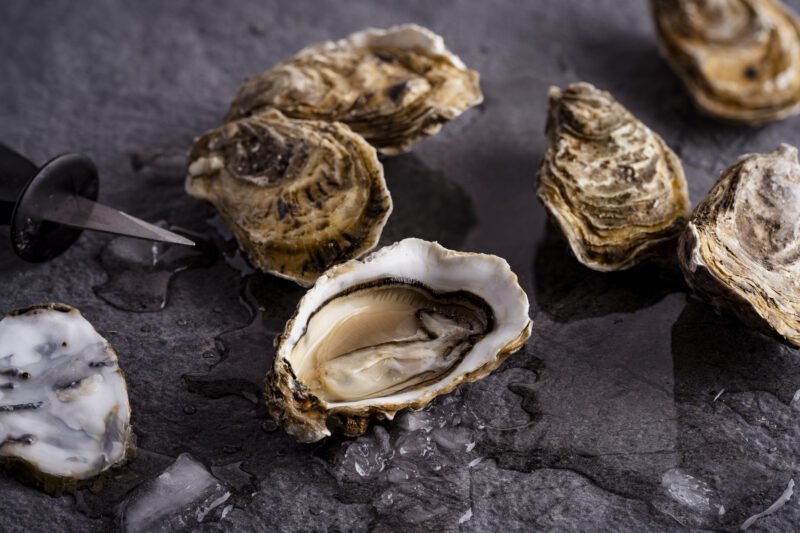
Understanding the size of oysters
The size of a creuse oyster is indicated by a measurement from 0 to 6. The largest oysters have the lowest number. A 0 oyster is the largest and weighs more than 150 grams. The smallest oyster, number 6, is not sold on the market. The most commonly sold size is the number 3 oyster.
For flat oysters, the size is reversed and indicated by a number of zeros. A 6/0 oyster is the largest and the smallest is only 1/0.
Where to find Namibian oysters
Unfortunately, you won't find Namibian oysters here in Europe. They are mainly exported alive to China, Japan and South Africa. Cruise ships sailing along the coast also stock up on Namibian oysters. Recently, oysters have managed to attract Namibian meat lovers and the demand for Walvis Bay oysters in the interior of the country is steadily increasing.
Recipe: Oysters au gratin as in Namibia
For this dish, use a large, fleshy oyster such as a Gillardeau or Fine de claire.
Place a small layer of coarse salt in the bottom of a baking dish and place the oysters on top. This will hold them in place.
This recipe makes a delicious meal for 2 people.
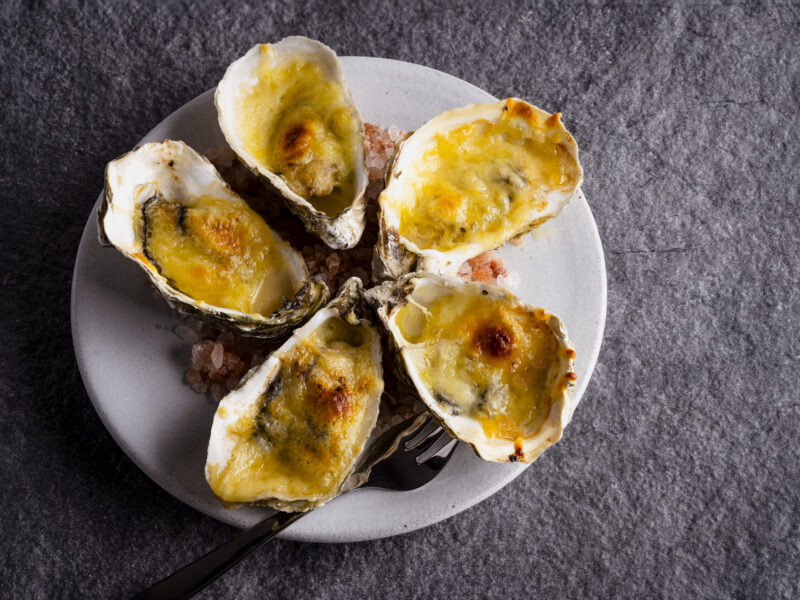
Ingredients:
- 12 hollow oysters (creuses) no.3 or no.2
- 50 g unsalted butter
- 1 clove of garlic, minced
- 1/8 teaspoon cayenne pepper or a few drops of Tabasco sauce
- 100 g freshly grated Swiss cheese
- Coarse salt for the baking dish
-
Step 1
Preheat the oven to 210°C.
Melt the butter without making it foamy. Add the garlic and cayenne pepper or Tabasco to the butter and set aside.
-
Step 2
Shuck the oysters and drain the liquid. Cover the bottom of a baking dish and arrange the oysters on top.
![Food Namibian Grilled Oysters 7]()
-
Step 3
Brush the oysters with the garlic butter using a kitchen brush. Sprinkle them with the grated cheese.
Place the oysters in the oven and broil for about 10 minutes
![Food Namibian Grilled Oysters 6]()
-
Step 4
Serve the oysters with crusty bread on the side.
![Food Namibian Grilled Oysters 2]()
